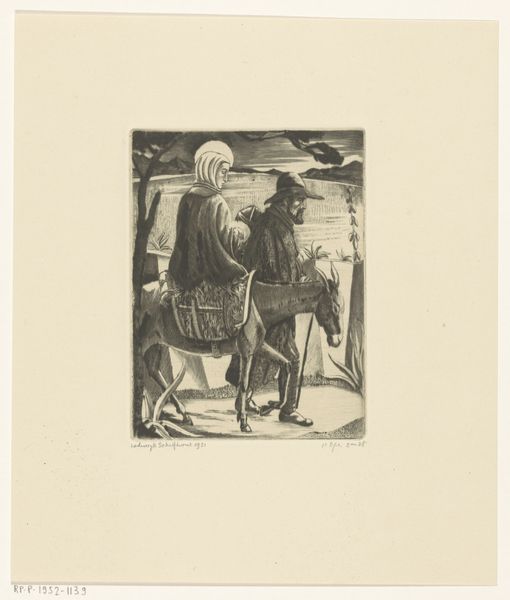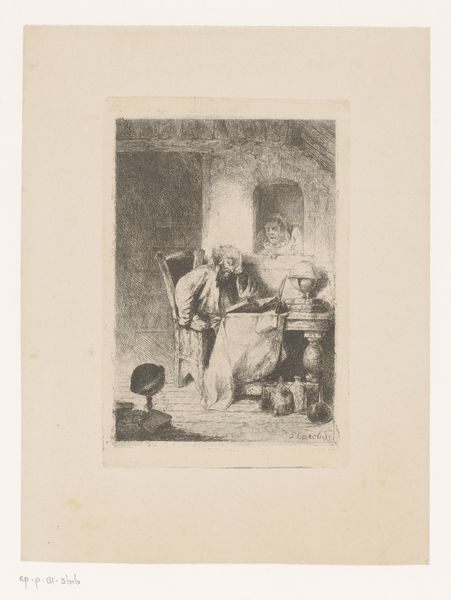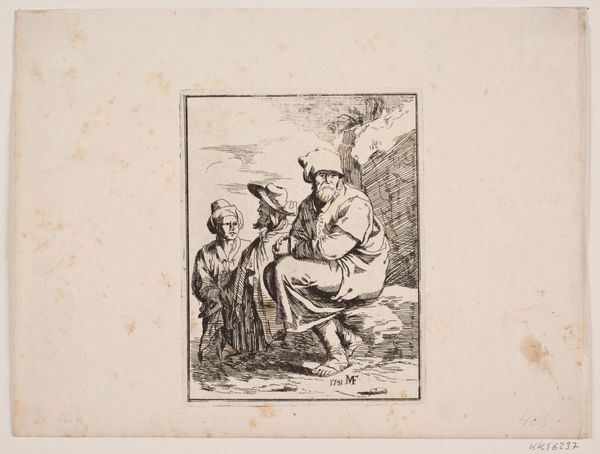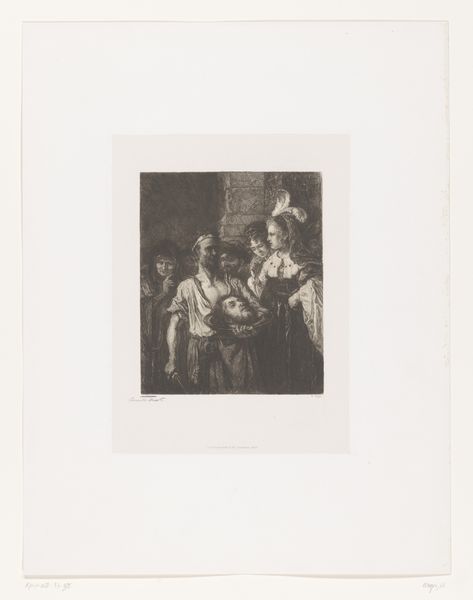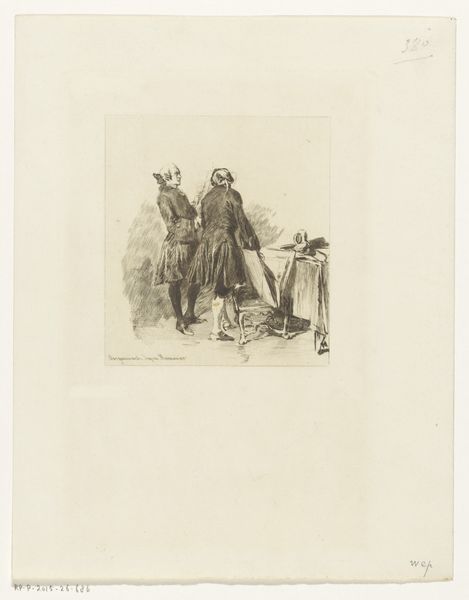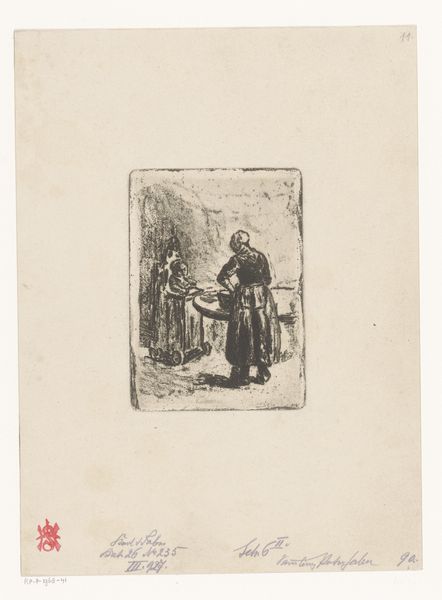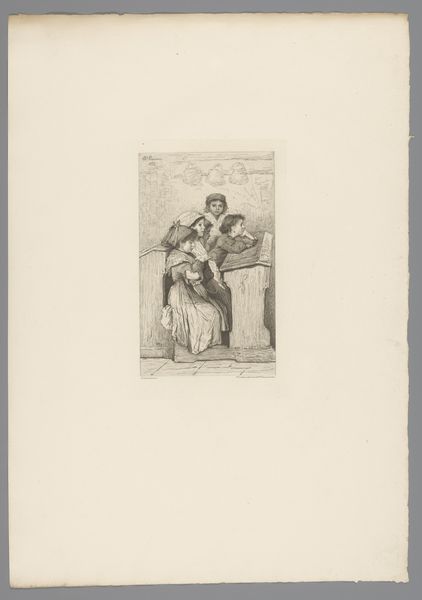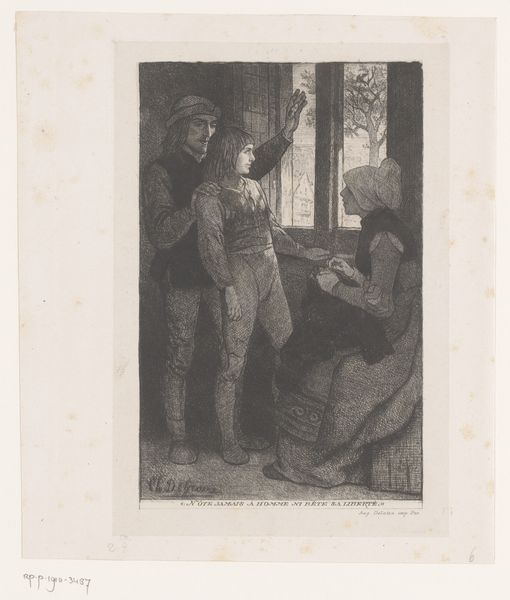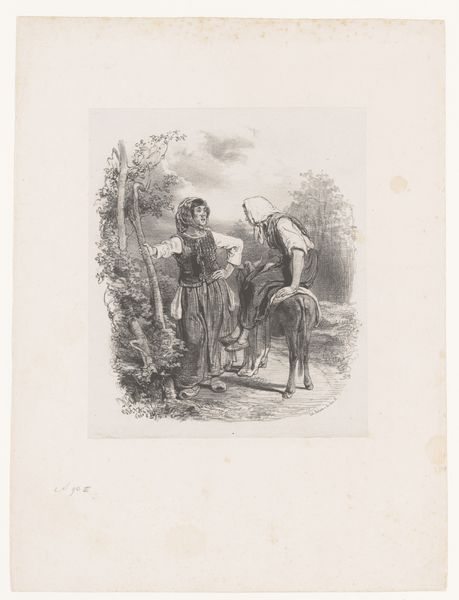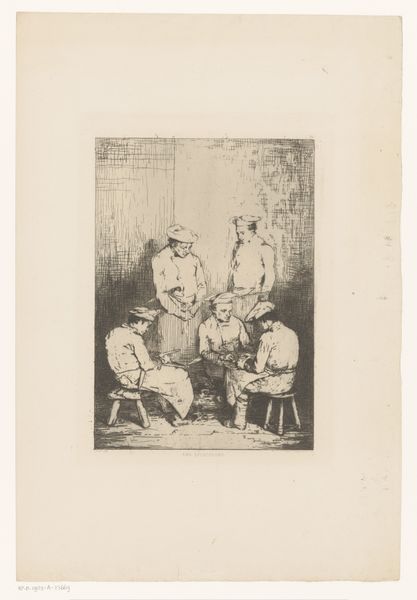
print, etching
#
portrait
# print
#
etching
#
genre-painting
#
realism
Dimensions: height 160 mm, width 136 mm
Copyright: Rijks Museum: Open Domain
Curator: At first glance, this piece exudes a sort of understated dignity. It's not flashy, but there's a depth to it that draws you in, wouldn't you agree? Editor: Absolutely. We’re looking at "Doedelzakspelers," or "Bagpipe Players," an etching by André Hennebicq, created in 1871. It offers us a fascinating glimpse into 19th-century genre painting. Curator: Etching! The cross-hatching gives it such a gritty texture, almost like you can feel the roughness of their woolen clothes. It’s more than just observation, though; it's empathy etched in lines. The air feels thick with music—or maybe just anticipation before the first note. Editor: Hennebicq situates this work squarely within the realist movement, showcasing everyday life. Genre paintings like these were incredibly important then. They validated the lives and experiences of common folk. Curator: Validated is such a great word! Because you could say that before realism, only fancy subjects deserved immortalizing, you know? But here are these men, likely working-class—I love the way Hennebicq captured their posture, so grounded—elevated in a simple scene. Editor: And it speaks to the burgeoning sense of national identity in the 19th century, particularly in places like Belgium. Hennebicq depicts folk culture—the bagpipe is, after all, not exactly your high society instrument. Curator: I like that a lot. It definitely feels of the earth. It makes me want to be drinking ale in some pub somewhere! So there’s the musical element. But I like, also, the quiet intimacy between the players; a nod to shared experience. Editor: It also opens up discussions about cultural performance and identity. Was Hennebicq simply observing, or was he, perhaps, participating in constructing a certain national image through his art? Curator: Good question! Maybe the act of documentation also makes it so. But to simply revel for a moment in the intimacy, I sense they’re making something greater together. That bagpipe's the physical symbol, of course—but this feeling of music, place and belonging –I find that profoundly hopeful, honestly. Editor: Seeing how art plays such a role in creating collective memories always excites me. So thank you, André Hennebicq, for the music.
Comments
No comments
Be the first to comment and join the conversation on the ultimate creative platform.
